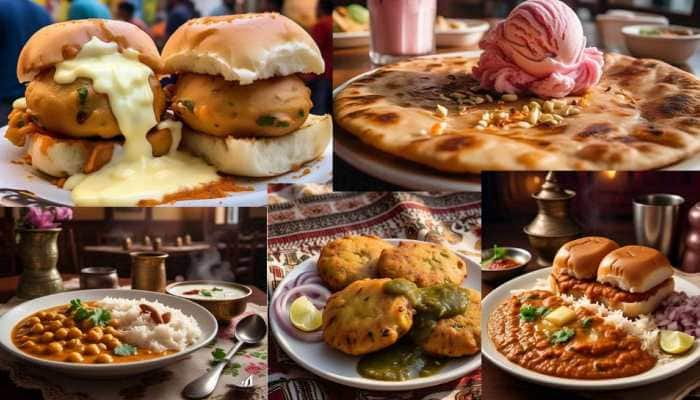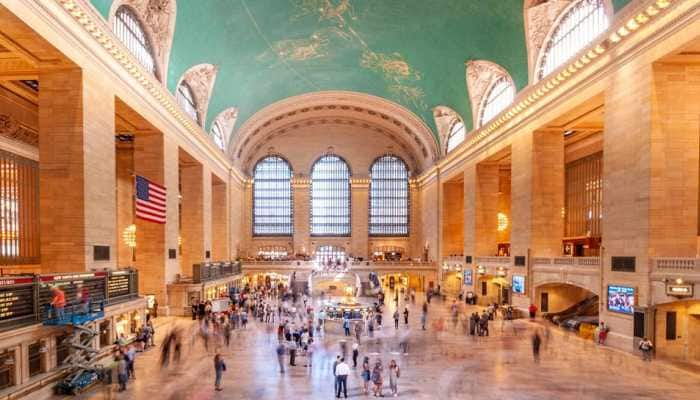G20 Summit: Iconic Taj Palace Hotel In Delhi Shines In Tricolour - WATCH
G20 Summit In Delhi: Numerous landmarks and historical buildings, including the Jama Masjid and the Qutub Minar, as well as all the main roads leading to the G20 Summit venue, prominent hotels such as The Taj Palace in Chanakyapuri, have been adorned with special lights, vibrant flowers, and decorative umbrellas.
Trending Photos
NEW DELHI: The highly anticipated G20 Summit is set to grace the newly constructed Bharat Mandapam Convention Centre in the heart of Pragati Maidan in the national capital, from September 9 to 10. In anticipation of this monumental political gathering, the vibrant city of Delhi has undergone a stunning transformation, with decorative lights and vibrant flowers taking centre stage in this remarkable metamorphosis.
Numerous landmarks and historical buildings, including the Jama Masjid and the Qutub Minar, as well as all the main roads leading to the G20 Summit venue, prominent hotels such as The Taj Palace in Chanakyapuri, have been adorned with special lights, vibrant flowers, and decorative umbrellas.
The Taj Palace Hotel, set to host several world leaders, now stands brilliantly illuminated in the colours of the Indian Tricolour. Even historical marvels like the Qutub Minar and the Red Fort have been bathed in radiant lights, while the city's streets shimmer with colourful illuminations.
In an 11-second video shared by the news agency ANI, the Taj Palace Hotel can be seen adorned with the colours of the Indian flag. Initially reserved for Chinese President Xi Jinping, the Taj Hotel has been allocated to China's State Council Premier, Li Qiang, who will represent China at the G20 Summit.
#WATCH | Hotel Taj Palace in Delhi illuminated in colours of the Tricolour as it prepares for the G20 Summit. pic.twitter.com/LvS6NvnXFl — ANI (@ANI) September 7, 2023
To enhance the city's ambience, striking G20 logos have been prominently displayed on footpaths and roundabouts surrounding the Pragati Maidan tunnel. Additionally, the India Gate area has been adorned with numerous decorations, infusing an air of grandeur into the surroundings.
#WATCH | Delhi | The area around Jama Masjid decorated with colourful lights, decorative umbrellas and flowers ahead of the G20 Summit. pic.twitter.com/3H5regAcLz — ANI (@ANI) September 7, 2023
Delhi's roads have undergone extensive renovations, with pavements adorned with flowers and life-size posters of India's Prime Minister, Narendra Modi, in preparation for his scheduled bilateral talks with world leaders, including US President Joe Biden, French President Emmanuel Macron, British Prime Minister Rishi Sunak, and Canadian Prime Minister Justin Trudeau.
#WATCH | Delhi: Delegates of the G20 Summit to be served in silverware and gold utensils pic.twitter.com/1f2Zm0wGTL — ANI (@ANI) September 6, 2023
The cityscape now boasts nearly 700,000 flower pots, with flowers adorning roundabouts, while vigilant police personnel ensure a safe and harmonious atmosphere. Delhi has undergone a massive transformation in preparation for the G20 Summit, which will be held on September 9 and 10 in the national capital, attracting world leaders and delegates to India. Roads have been refurbished, pavements beautified, and boundary walls freshly painted. Metro stations have received artistic murals, adding vibrancy to the city's landscape.
In addition to road development, the Delhi government has embarked on extensive beautification projects, including the installation of 31 statues, and 90 fountains on PWD roads, the planting of 1.65 lakh plants, and the installation of decorative lighting.
Multiple agencies, including the New Delhi Municipal Council (NDMC), the Public Works Department (PWD), and the Municipal Corporation of Delhi (MCD), have joined forces to elevate Delhi's aesthetics for the G20 Summit. Earlier, the Delhi International Airport Limited (DIAL) took readiness initiatives at the Delhi airport, including the setup of special immigration counters for the arriving guests.
India, which assumed the G20 presidency on December 1, 2022, under the theme 'One Earth, One Family, One Future,' is hosting the mega Summit this year. The event, hosted at the state-of-the-art Bharat Mandapam Convention Centre at Pragati Maidan in New Delhi, will see the participation of over 30 heads of state, top European Union officials, invited guest countries, and 14 heads of international organizations.
A G20 Leaders’ Declaration will be adopted at the conclusion of the Summit, affirming the leaders' commitment to the priorities discussed and agreed upon during the ministerial and working group meetings.
Stay informed on all the latest news, real-time breaking news updates, and follow all the important headlines in india news and world News on Zee News.
Live Tv







)
)
)
)
)
)
)
)
)
)
